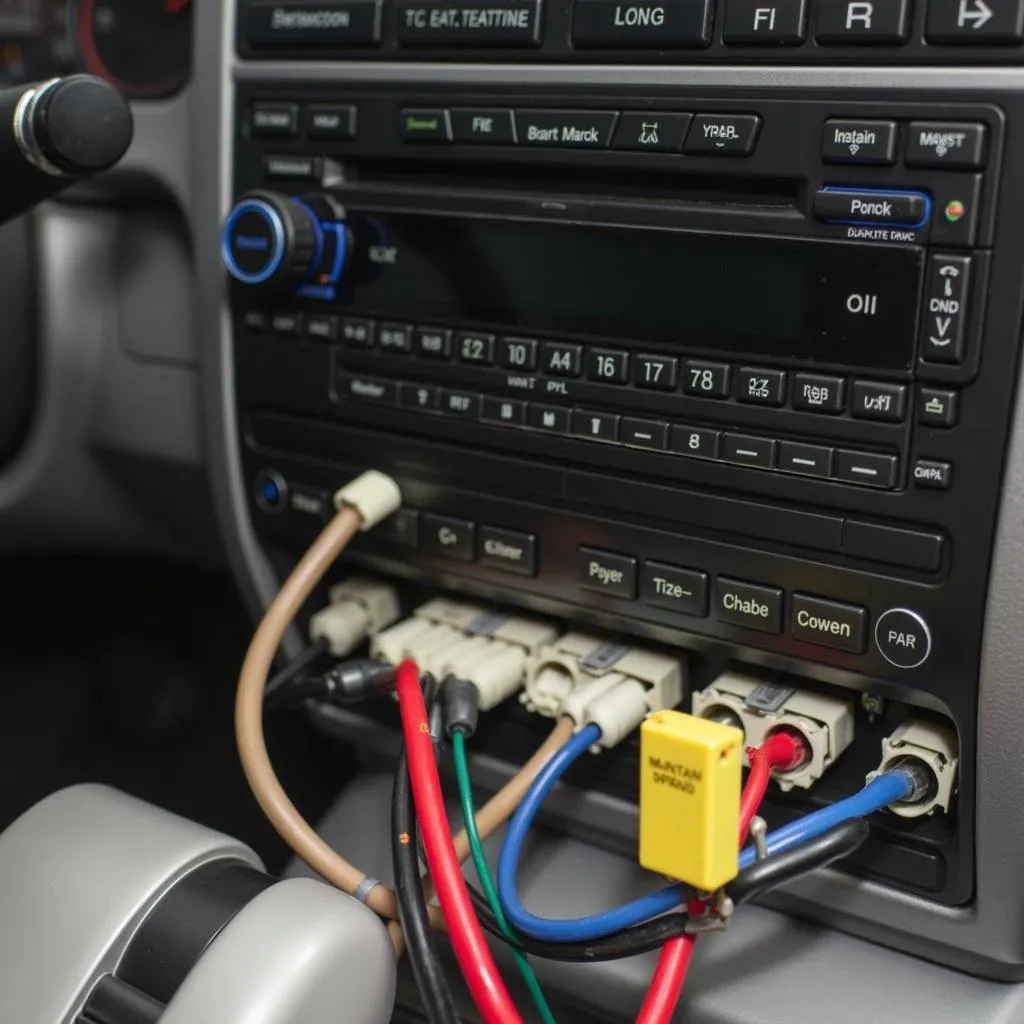The Ford Transit Custom is a popular van known for its reliability and versatility. However, like any vehicle, it can experience issues, and one common concern is the brake warning light. If you see this light illuminate on your dashboard, it’s crucial to address the problem promptly for your safety and the well-being of others on the road.
This article will delve into the common causes behind the Ford Transit Custom brake warning light, provide guidance on diagnosing the issue, and offer potential solutions to get your van back on the road safely.
Common Causes of the Brake Warning Light
The brake warning light on a Ford Transit Custom is a broad indicator that can signal a variety of potential problems. Here are some of the most frequent culprits:
1. Low Brake Fluid
The most straightforward reason for the brake warning light to illuminate is simply low brake fluid. Brake fluid acts as a hydraulic medium, transmitting pressure from the brake pedal to the calipers, which then press the brake pads against the rotors to slow the vehicle down. If the fluid level drops below a critical point, the warning light will turn on to alert you.
Expert Tip: _”Always check your brake fluid level regularly, and top it up if needed. Using the correct type of brake fluid is crucial for optimal performance and safety.” – John Smith, Certified Automotive Technician
2. Faulty Brake Pad Wear Sensor
Modern brake pads are equipped with wear sensors, which are small electrical components that trigger the warning light when the brake pads become too thin. When the sensor contacts the rotor, it completes a circuit, activating the warning light.
3. Issues with the Brake System
A faulty brake booster, master cylinder, or caliper can also trigger the brake warning light. These components are crucial to the braking system’s functionality and any malfunction can compromise braking performance.
4. Electronic Parking Brake Malfunction
The Ford Transit Custom often features an electronic parking brake. If this system malfunctions, it can activate the brake warning light.
Diagnosing the Brake Warning Light
Here are some steps you can take to diagnose the issue causing your Ford Transit Custom’s brake warning light:
- Check the Brake Fluid Level: Start by inspecting the brake fluid reservoir located under the hood. Ensure the fluid level is within the designated “Full” mark. If it’s low, add the appropriate brake fluid, paying attention to the specified type in your vehicle’s manual.
- Inspect the Brake Pads: Visually check the brake pads for wear. If they are thin or worn down, they need to be replaced.
- Check for Leaks: Examine the brake lines, calipers, and master cylinder for any signs of leaks. If you notice any fluid dripping or pooling, it’s essential to address the leak as soon as possible.
- Use a Diagnostic Tool: If you suspect a more complex issue, consider using an OBD-II scanner to retrieve error codes from the vehicle’s computer. These codes can provide more specific insights into the underlying problem.
Fixing the Brake Warning Light
The solution for your brake warning light depends on the root cause of the issue. Here’s a breakdown:
1. Low Brake Fluid
If the brake fluid level is low, top it off with the correct type of fluid. However, low brake fluid could indicate a leak, which requires prompt attention.
2. Faulty Brake Pad Wear Sensor
If the warning light is triggered by a worn brake pad sensor, you’ll need to replace the brake pads. This usually involves replacing both pads and rotors for optimal performance.
3. Issues with the Brake System
If the issue lies with the brake booster, master cylinder, or calipers, you’ll need to have these components inspected and repaired or replaced by a qualified mechanic.
4. Electronic Parking Brake Malfunction
A malfunctioning electronic parking brake often requires specialized diagnostic tools and repairs. Consult a certified mechanic for assistance.
Conclusion
The Ford Transit Custom brake warning light is a critical indicator that demands immediate attention. Ignoring it can lead to potentially dangerous situations, compromising your safety and the safety of others. By understanding the common causes, diagnosing the issue accurately, and addressing the problem promptly, you can restore your Transit Custom’s braking system to optimal performance and ensure a safe driving experience.
FAQ
1. Is it safe to drive with the brake warning light on?
While it’s generally not advisable to drive with the brake warning light on, the severity of the situation can vary. If the warning light is due to low brake fluid, you might be able to drive a short distance to a repair shop. However, if the issue lies with the brake pads, rotors, or other components, it’s best to avoid driving until the problem is addressed.
2. How often should I check my brake fluid level?
It’s recommended to check your brake fluid level at least once a month, or more frequently if you notice any changes in braking performance.
3. Can I replace the brake pads myself?
Replacing brake pads can be done by DIY enthusiasts with some mechanical knowledge. However, if you’re not comfortable working on your vehicle, it’s best to have a qualified mechanic handle the task.
4. What is the cost of replacing brake pads and rotors?
The cost of replacing brake pads and rotors varies depending on the specific vehicle model, location, and chosen parts. It’s advisable to get multiple quotes from reputable mechanics to find the best price.
5. How can I prevent brake problems in the future?
Regular maintenance is key to preventing brake problems. This includes checking brake fluid levels, inspecting brake pads for wear, and performing routine brake system inspections by a qualified mechanic.

